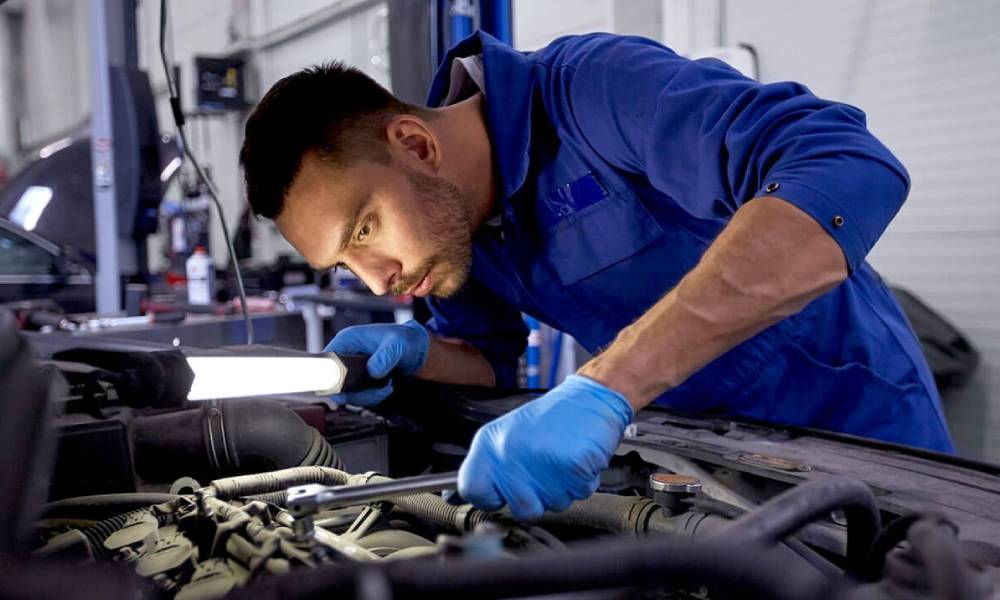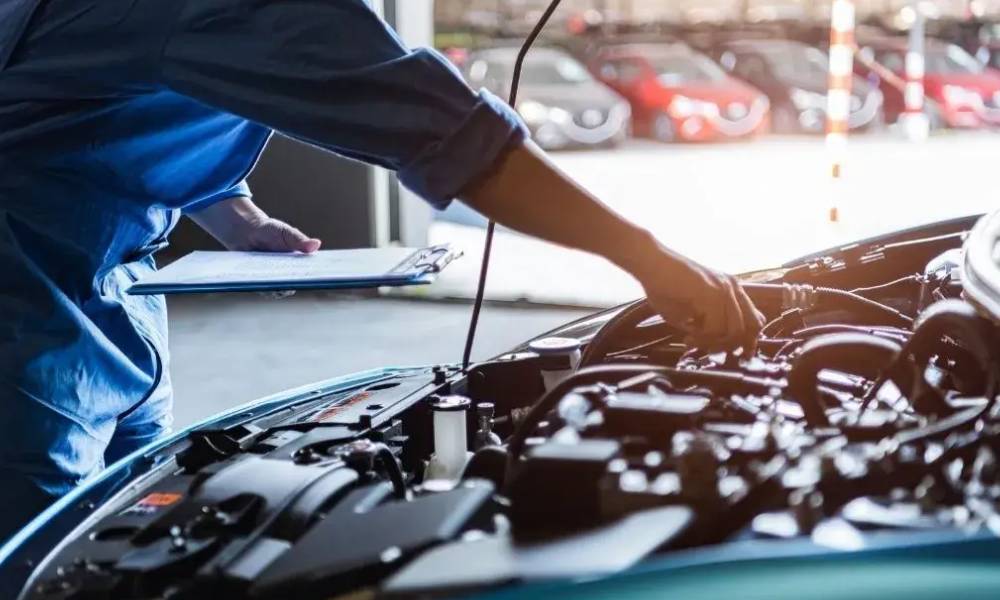What is the Ministry of Transport Test (MOT Test)?
In the United Kingdom, vehicle owners must get their three-year-old or older vehicles inspected annually. This is known as the MOT test. The test aims to ensure that the vehicles meet the government standards for their environmental impact, roadworthiness, and safety.
The MOT is a legal requirement and is carried out at government-authorised testing centres. The test covers numerous vehicle components, including mirrors, seat belts, suspension, steering, emissions, brakes, and others.
Once the MOT test has been carried out, the testing centre issues a pass or fail certificate, depending on the test results. Any vehicle that fails the test has to undergo the necessary repairs and retest before it can be driven. Driving your vehicle without an MOT certificate can result in legal action, including penalties and fines.
Does MOT Test Differ from Vehicle Servicing?
MOT testing and servicing may have some things in common, but they are two distinct activities. For example:
- The MOT test is a legal requirement, whereas vehicle servicing is entirely the owner’s choice.
- The MOT test is required for vehicles that are three years or older. Servicing can be done for vehicles of any age, particularly after a specific mileage.
- The MOT test analyses the road safety and emissions of a vehicle. It covers an array of components. Servicing focuses on routine checks such as the level and quality of engine oil, the adequacy of lubricants and fluids, tire pressure, radiator performance, interior & exterior cleaning, and others.
- Servicing may also include repairs or replacements of different car parts. MOT test inspects the condition of various parts.
- Completing the MOT test results in a fail or pass certificate, while servicing does not.

What is Included in the MOT Test?
MOT tests are comprehensive and detailed. Numerous tests are carried out, from vehicle identification to inspection emissions, to assess the vehicle’s overall condition. The identification and registration number of the vehicle is checked. Electrical components such as signals, headlamps, hazard lights, and brake lights are examined.
The authorised representative also inspects the suspension and steering for signs of wear and tear. The functionality of these components is also checked. Underhood components such as hoses and fluid levels are also inspected. The vehicle’s body is examined for signs of rust and structural integrity. It’s important to note that the specific items inspected during an MOT test may vary slightly depending on the vehicle’s type, age, and design.
What is Vehicle Servicing?
Vehicle servicing refers to a series of regular maintenance and inspection procedures carried out on a vehicle to guarantee optimal performance, safety, and longevity. Servicing involves a series of checks, adjustments, and replacements of various components and fluids to keep the vehicle in optimal condition. Regular servicing is essential for preventing potential issues, identifying problems early, and maintaining the vehicle’s performance and reliability.
Key aspects of vehicle servicing typically include:
- Oil Change: Changing the engine oil and replacing the oil filter is fundamental to servicing. Fresh oil helps lubricate the engine, reduce friction, and protect internal components.
- Fluid Checks and Top-ups: Technicians check and top up various fluids, including coolant, brake fluid, power steering fluid, and windshield washer fluid.
- Brake Inspection: The braking system is inspected to ensure that brake pads, rotors, callipers, and brake lines are in good condition and functioning correctly.
- Tire Inspection: Tire tread depth, tire pressure, and overall tire condition are checked. Properly maintained tires are crucial for safe handling and fuel efficiency.
- Suspension and Steering: The suspension and steering components are inspected for wear, leaks, and damage to ensure stable handling and a smooth ride.
- Lights and Electrical Systems: All exterior and interior lights and electrical systems are checked for proper operation.
- Air Filter and Cabin Filter Replacement: Air filters are inspected and replaced if needed, which play a role in engine performance and air quality. Cabin filters may also be replaced for improved interior air quality.
- Exhaust System Inspection: The exhaust system is examined for leaks, damage, and proper emissions control.
- Belt and Hose Inspection: Belts (such as the serpentine belt) and hoses (coolant hoses, power steering hoses, etc.) are checked for wear and cracks.
- Battery Check: The battery’s voltage and connections are inspected to ensure reliable starting and proper electrical system operation.
- Visual Inspection: A comprehensive visual inspection is performed to identify any visible issues or abnormalities that may require attention.
- Test Drive: In some cases, a brief test drive may be conducted to assess the vehicle’s overall performance and handling.
Vehicle servicing is typically recommended at specific intervals based on mileage and time, as specified in the manufacturer’s service schedule. Adhering to the recommended service schedule helps maintain the vehicle’s warranty coverage, ensures optimal performance, and minimises the risk of unexpected breakdowns or costly repairs. It’s advisable to have servicing performed by qualified technicians at authorised service centres to ensure that the work is done correctly and in accordance with manufacturer guidelines.
Common Myths about MOT Test and Servicing

Myth 1: Vehicles always fail the MOT test
A widespread misunderstanding among the public is that the MOT test is so strict that no vehicle would pass the test. Please remember the purpose of the MOT test is not to fail vehicles but to check if they are suitable for the environment and safe for the public.
However, some vehicles may fail the test, which happens when the vehicle is not fit for use anymore or has not been repaired/serviced in years. If you are in the habit of maintaining your vehicle and carrying out servicing frequently, you have a much higher chance of passing the test.
Myth 2: Frequent servicing is unnecessary and expensive
The opposite is true. While you will have to spend money on servicing your vehicle regularly, it will save you from more expensive repairs in the future. Regular servicing enhances the lifespan of your vehicle’s components and protects them from trouble. Regular servicing may also help you control fuel consumption and save money.
Myth 3: MOT tests guarantee that a vehicle is reliable
While the MOT test is very comprehensive, it does not cover everything. Getting an MOT test does not imply you should not get your vehicle serviced or inspected. Servicing is essential to address routine maintenance tasks, fluid changes, and proactive measures that keep the vehicle running smoothly and prevent potential issues from arising.


